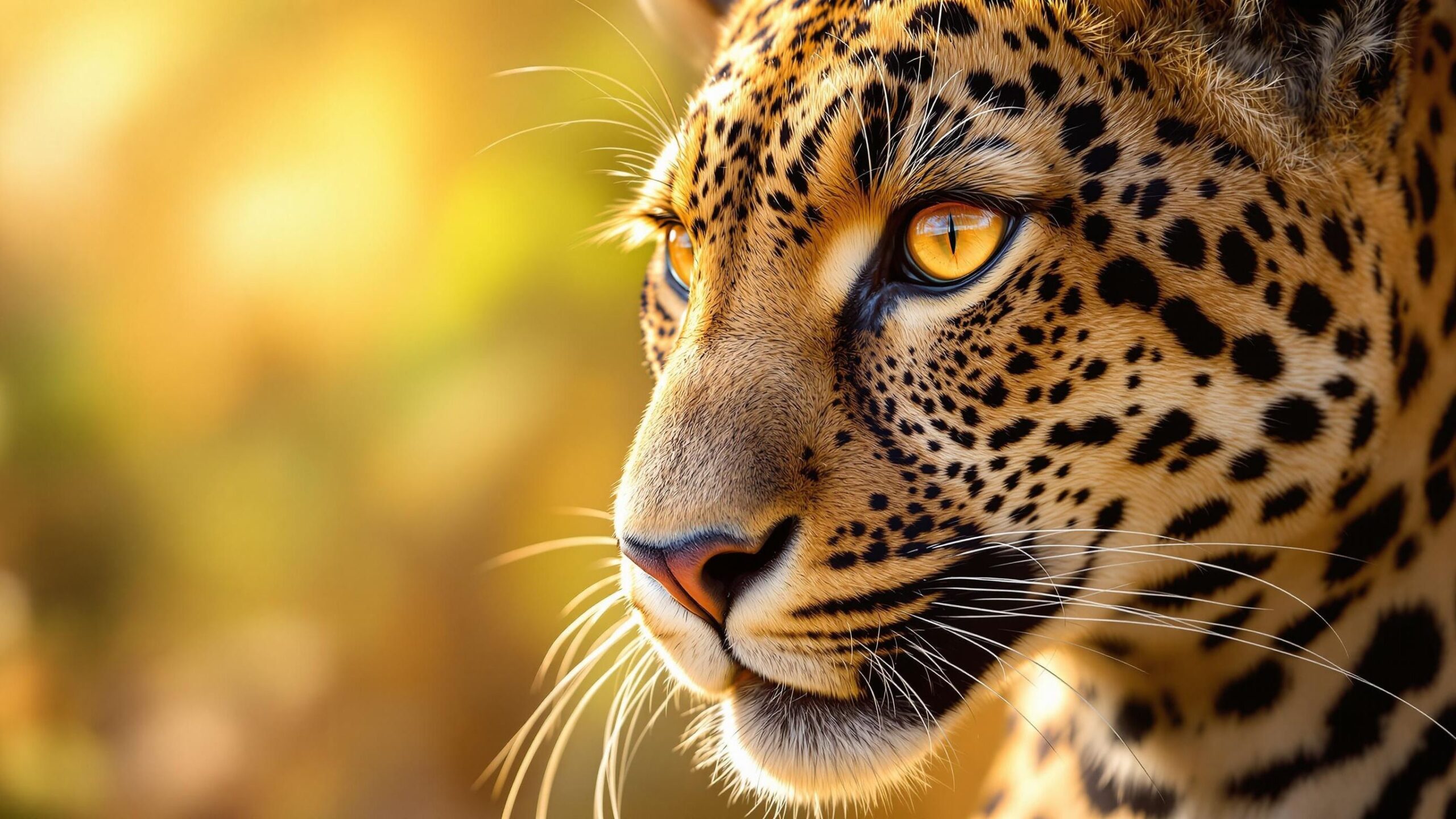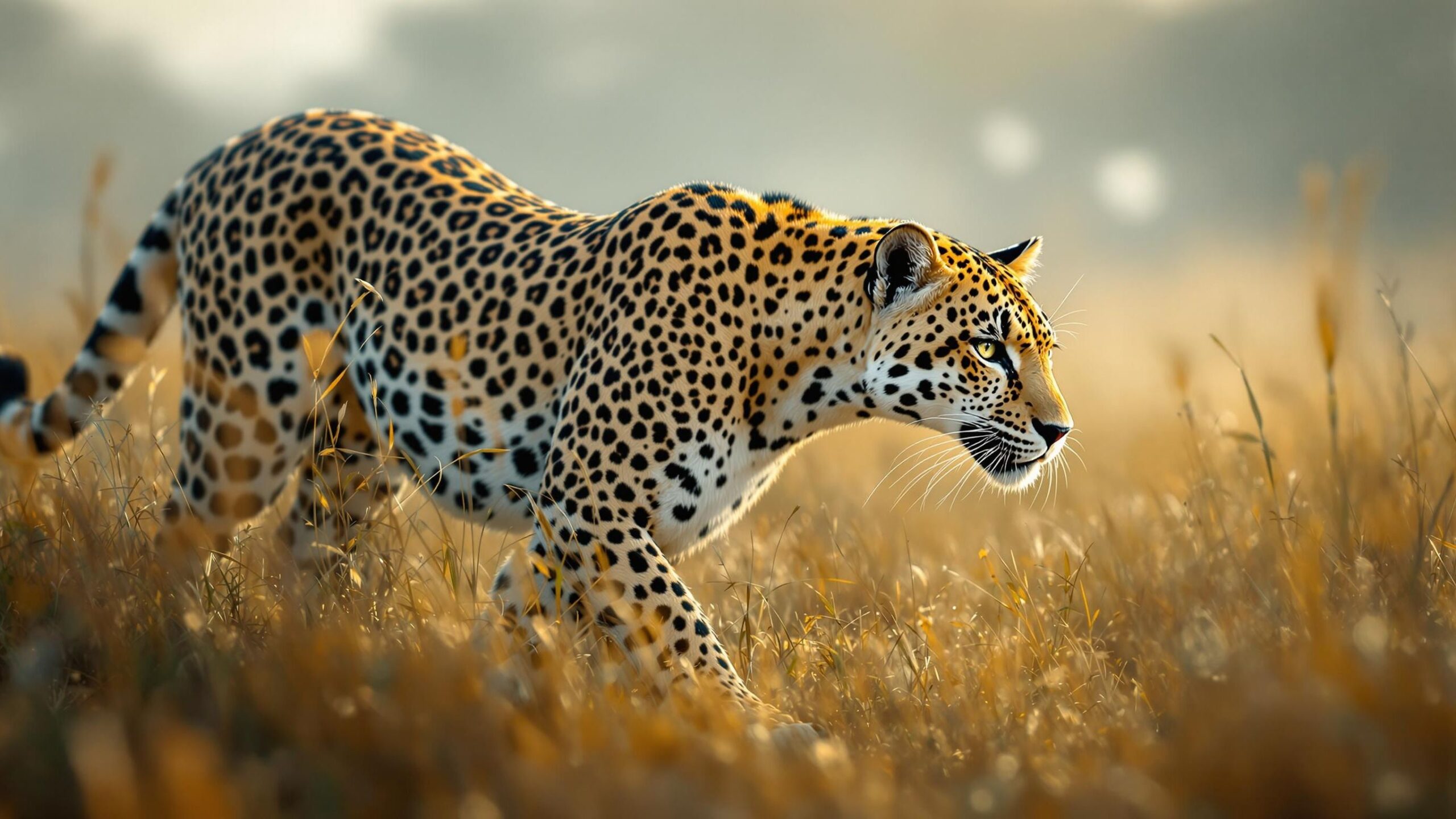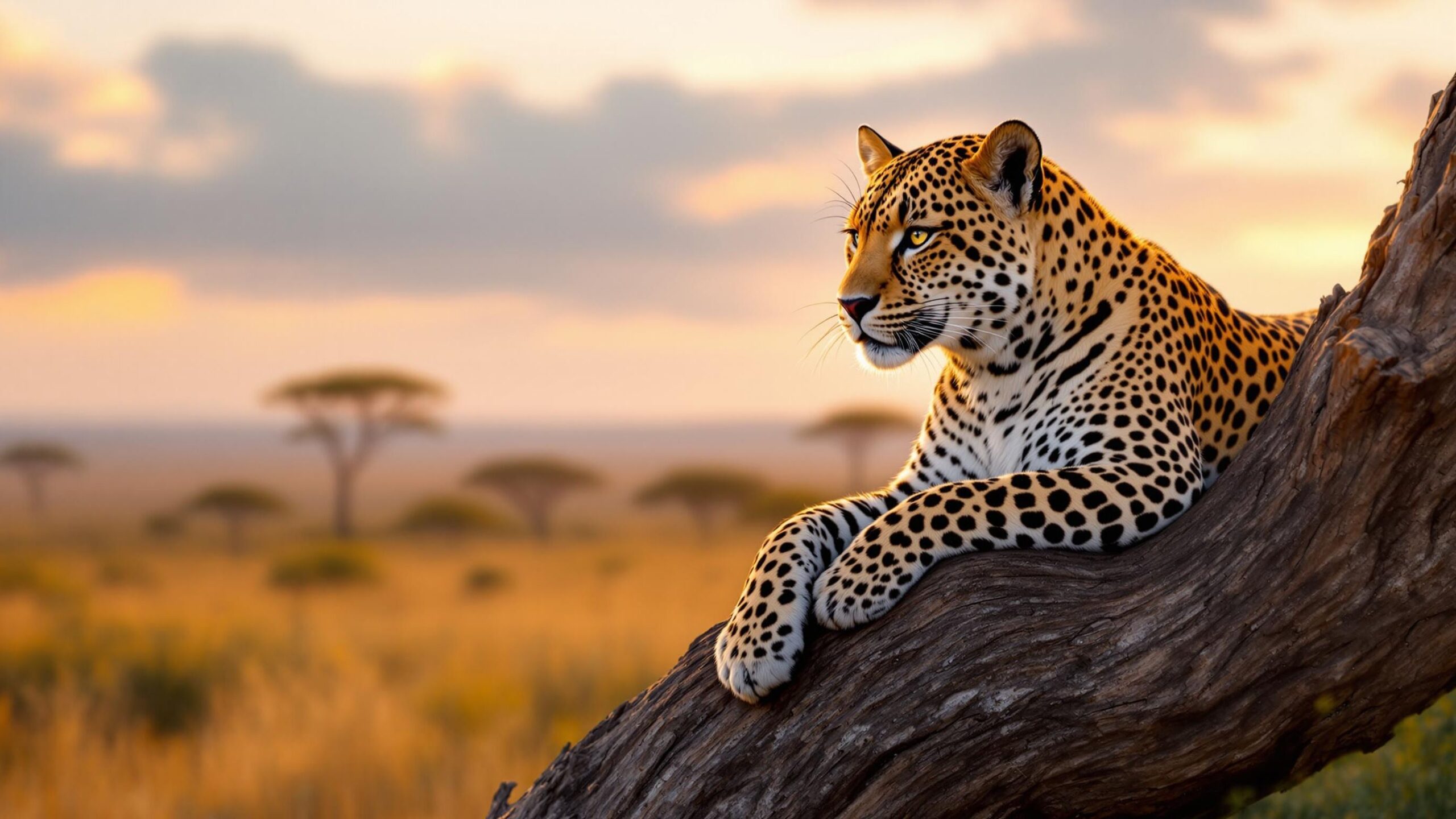African Leopard: Elusive Ghost of the Savannah
Few animals command as much admiration and intrigue as the African leopard, known scientifically as Panthera pardus pardus. A master of stealth and survival, this big cat reigns as one of Africa’s most iconic yet mysterious predators. Sleek, spotted, and supremely adaptable, the African leopard roams a range of habitats across the continent—from sun-scorched savannahs to dense rainforests, misty highlands, and rocky deserts. Elusive by nature and solitary in spirit, the leopard is a symbol of wild power and elegance, threading its way through the ancient lore and landscapes of Africa.
In this in-depth look at the African leopard, we’ll explore its physical traits, behavior, hunting prowess, habitat, role in ecosystems, interactions with humans, and the delicate conservation challenges it faces today. This is your essential guide to understanding one of the most compelling carnivores on the planet.
A Portrait in Spots: Physical Characteristics
The African leopard is the epitome of grace and muscular efficiency. Adult males typically weigh between 80 to 200 pounds (36 to 91 kilograms), with females somewhat smaller at 60 to 130 pounds (27 to 59 kilograms). Body length ranges from 4.25 to 6.25 feet (1.3 to 1.9 meters), excluding the tail, which adds another 2.5 to 3.5 feet (76 to 107 centimeters). Despite their moderate size compared to lions or tigers, leopards are pound-for-pound some of the strongest cats in the wild.
Their coat is a mosaic of golden-yellow fur adorned with black rosettes—flower-shaped markings that provide excellent camouflage in the dappled light of forests or the tall grasses of the savannah. No two leopards have identical spots, making each pattern as unique as a fingerprint. A hallmark of the leopard is its adaptability, and this is visible even in its coat. Leopards from dense forests tend to be darker, aiding concealment in shadowy undergrowth, while those from drier open regions have lighter, sand-colored fur. This versatility in appearance is just one example of how the species has fine-tuned itself to survive in varied environments.
The Solitary Predator: Behavior and Lifestyle
African leopards are predominantly solitary animals. Unlike lions, which live in prides, leopards prefer to operate alone, staking out and defending their territories through scent marks, claw scrapes, and vocalizations that range from raspy coughs to growls and roars. Activity patterns vary depending on habitat and local conditions, but leopards are primarily nocturnal and crepuscular—most active at dawn and dusk. In areas with minimal human disturbance, they may also be seen during daylight hours.
Territory size varies widely. In regions rich in prey, a leopard might range over just 5 to 15 square miles (13 to 39 square kilometers). In more arid or less bountiful areas, that territory might stretch across more than 100 square miles (260 square kilometers). Males tend to claim larger territories, often overlapping those of several females, while females are fiercely protective of their own ranges, especially when raising cubs.
Silence in the Hunt: Hunting Techniques and Diet
If the lion is Africa’s bold and brash king, the leopard is its silent assassin. African leopards are ambush predators, relying on stealth, patience, and explosive speed rather than endurance. They stalk their prey quietly, keeping low to the ground, closing in within meters before launching a surprise attack. Once within striking distance, a leopard will charge with breathtaking acceleration and use its powerful jaws to deliver a killing bite, usually to the throat or back of the neck. With strong forelimbs and claws, it can subdue animals larger than itself and hoist them into trees to avoid scavengers like hyenas and lions.
This tree-dragging behavior is one of the African leopard’s most impressive feats. A full-grown male leopard can haul a carcass more than twice its own weight into the high branches of a tree. There, it can feed in peace, sometimes for days, returning periodically to the kill. The leopard’s diet is astoundingly diverse. It includes antelopes, warthogs, monkeys, birds, reptiles, rodents, fish, and even insects. In human-altered environments, leopards have been known to prey on livestock and domestic dogs, which often leads to conflict with people.

Home on the Range: Habitat and Distribution
African leopards are found in more habitats than any other large cat on the continent. They inhabit over 30 African countries and thrive in ecosystems as varied as:
The bushveld of South Africa
Rainforests of Central and West Africa
The Sahel’s dry savannahs
Ethiopian highlands
The rugged mountains of North Africa
This exceptional range is evidence of the leopard’s adaptability and stealthy lifestyle. They need only sufficient cover, water, and prey to thrive. While they can and do survive in close proximity to humans, they prefer secluded areas where they can remain undisturbed. However, their widespread distribution does not equate to security. Populations are declining in many regions due to habitat loss, poaching, human-wildlife conflict, and the illegal wildlife trade.
From Cubs to Commanders: Reproduction and Lifespan
Leopard mating rituals are brief but intense. When a female is in heat, she will signal her availability through scent and vocal calls. Once a male finds her, mating occurs frequently over a few days, after which they part ways. The male plays no role in rearing the young. Gestation lasts about 90 to 105 days, and the female gives birth to a litter of 1 to 4 cubs—usually in a secluded den such as a rocky crevice, thicket, or hollow tree. Cubs are born blind and helpless, weighing just 1 to 2 pounds (0.45 to 0.9 kilograms). They open their eyes after about 10 days and begin exploring their surroundings within a few weeks.
The mother moves her cubs regularly to avoid detection by predators. Cubs remain with their mother for up to two years, learning to hunt and navigate the dangers of their environment. Mortality among leopard cubs is high, due to threats from lions, hyenas, other leopards, and even baboons. In the wild, African leopards typically live 10 to 15 years, though they can exceed 20 years in captivity.
The Silent Keystone: Ecological Role
As apex predators, African leopards play a crucial role in maintaining healthy ecosystems. By regulating prey populations, they help balance herbivore numbers and prevent overgrazing. They also serve as scavenger providers—after feeding, their leftovers support a variety of smaller carnivores and birds.
Leopards are also known for their role in seed dispersal. When they consume frugivorous prey (such as monkeys that eat fruit), the seeds from that prey’s last meal may pass through the leopard and be deposited in new areas, helping regenerate plant life in the environment. This hidden ecological work earns the leopard the title of a “keystone species”—removing them from the environment can lead to cascading effects that destabilize entire ecosystems.
Leopards and Humans: A Tenuous Coexistence
Despite their adaptability, leopards often find themselves at odds with humans. As human populations expand and natural landscapes are fragmented, leopards are pushed into closer contact with people. This proximity often leads to livestock predation and, in rare cases, attacks on humans, which prompt retaliatory killings.
In many African cultures, the leopard is revered, feared, or both. It appears in traditional folklore as a creature of cunning and power. Its skin, teeth, and claws have historically been used in rituals, garments, and status symbols. Modern challenges have compounded these ancient interactions. Illegal hunting and the exotic pet trade threaten leopard populations in some areas. In others, trophy hunting—though heavily regulated—continues to spark debate over ethics, conservation funding, and sustainability.

Conservation Status: A Future in Question
The African leopard is currently classified as Vulnerable on the IUCN Red List, though some regional populations are considered Endangered or Critically Endangered. This designation reflects not just dwindling numbers but also fragmented populations, reduced genetic diversity, and increasing human conflict.
Major threats include:
Habitat loss from agriculture, mining, and urban expansion
Illegal hunting for skins and body parts
Retaliatory killings due to livestock loss
Poor enforcement of wildlife protection laws
Conservation strategies for leopards are as multifaceted as the cats themselves. Efforts include strengthening anti-poaching patrols, establishing wildlife corridors, working with communities on livestock protection, and promoting ecotourism as a non-extractive source of income. Some countries have introduced programs where local communities directly benefit from the presence of leopards—either through eco-safaris, research partnerships, or compensation schemes for livestock loss. These initiatives aim to turn former adversaries into guardians of leopard populations.
Why the Leopard Still Matters
The African leopard is more than just a beautiful predator—it is a symbol of wild Africa, a biological regulator, a character in our stories, and a bridge between nature and humanity. Its ability to live in our shadow yet remain largely unseen reminds us that even in an increasingly crowded world, wildness persists.
Preserving the African leopard isn’t just about saving a single species. It’s about maintaining the integrity of ecosystems, honoring cultural heritage, and redefining the way humans coexist with large carnivores. As apex predators go, few are as resilient—or as threatened—as Panthera pardus pardus. And as our world changes, ensuring a future for the African leopard may very well mean securing a future for the wild spaces it calls home.

